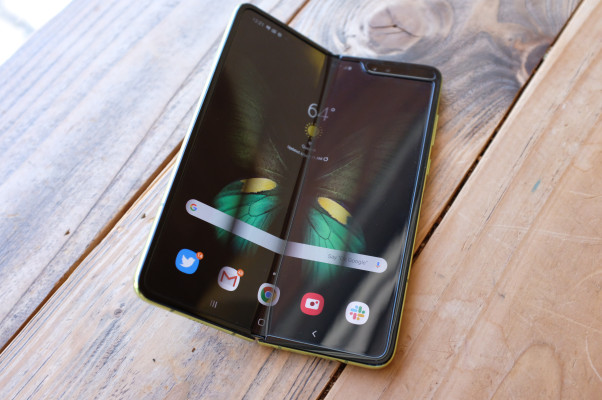[ad_1]
The Galaxy Fold It has been the most polarizing product that I remember reviewing. Everyone who saw it wanted to play with the smartphone paradigm change promised for a long time. The results, on the other hand, were much more varied.
If nothing else, the fold has a very high Q rating. Every person who saw me using the product had at least a vague idea of what it was. Honestly, I can not remember the last time I had that reaction with a device that is not iPhone. That’s great from the perspective of the brand. It means that many people are curious and potentially open to the idea that the Samsung Galaxy Fold is the future.
Of course, it also means that there are many people watching if you fail.
Somehow, last week with the Samsung Galaxy Fold has been an extremely public beta. A handful of samples were delivered to the reviewers. Most worked well (including mine), but at least three failed. It’s what we in the industry call a “public relations nightmare.” Or at least it would be for most companies.
The biggest storms of the weather of Samsung, especially with the Galaxy Note 7 a few years ago. Of course, that device made it much more advanced, which ultimately resulted in two large-scale retreats. The nature of the two themes was also very different. A screen that does not work properly does not put the user at body risk like an exploding battery. The optics of these things can not be worse than having your smartphone excluded from airplanes.
As of this writing, the Fold is still ready to go on sale, most likely this year. To be perfectly frank, the April 26 release date seemed too optimistic before the first reports of units that do not work properly. It’s never a good sign when a device is announced in February and is only available for review a few weeks before launch. It’s like when a study does not allow reviewers to watch a movie before the premiere. It does not necessarily mean that it is bad, but it is something to watch out for.
That is the thing. The Galaxy Fold is the kind of device you do not want to succeed. You want it to be great and you want Samsung to sell a billion because it’s a really exciting product after a decade of phones that look almost the same. There’s also the fact that Samsung has been promoting this thing for eight years, since it debuted as a flexible display at CES 2011.
Despite that, however, the stretch of the house feels rushed. Undoubtedly, Samsung saw the writing on the wall, as companies like Huawei prepared for their own folding. And while Royole beat the market, Samsung still had a very good chance in claiming to be the first commercially viable foldable in the market, with a decade of Galaxy devices under its belt and working with the Google team to create a Android UX that makes sense in a couple of very different screens.
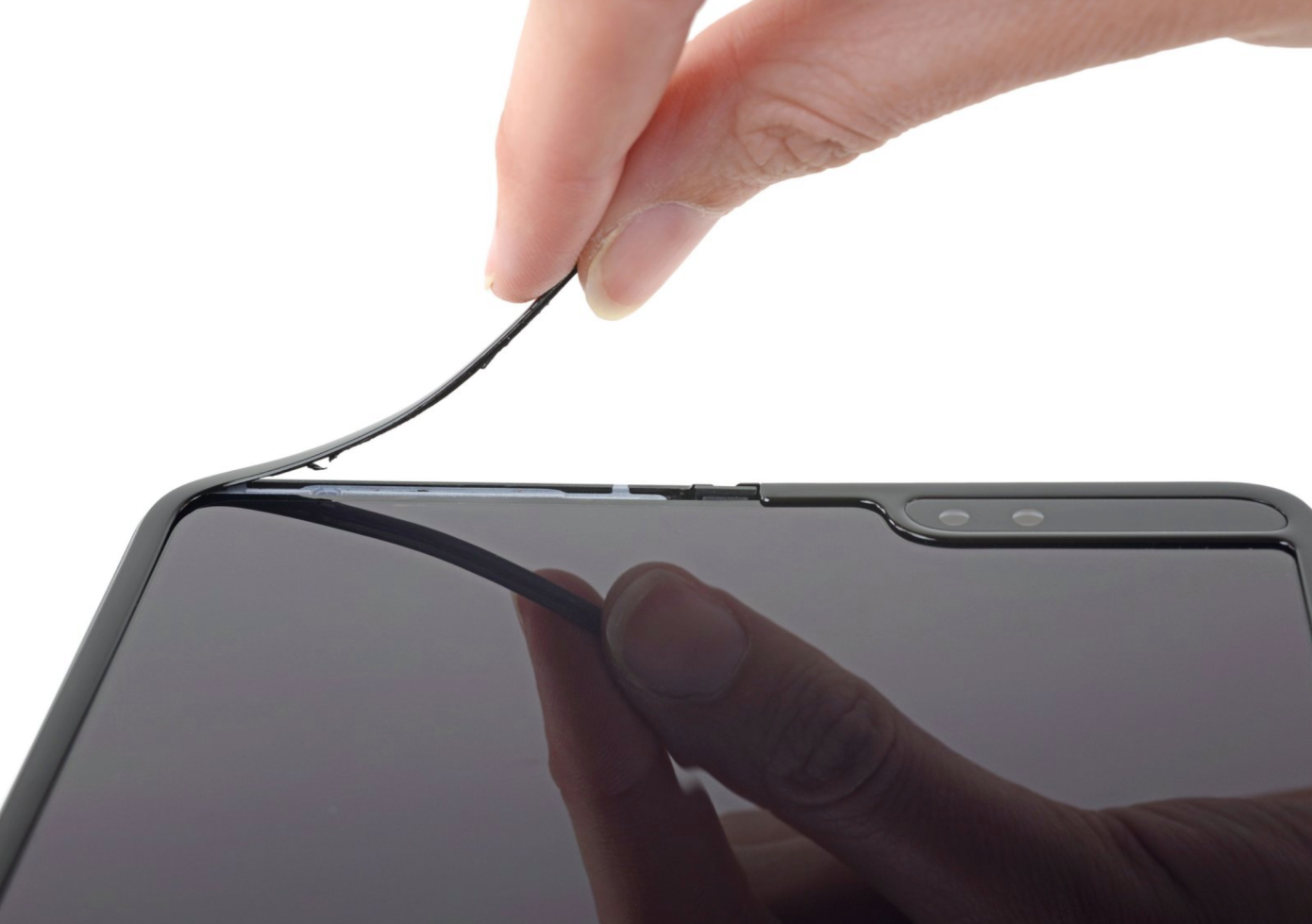

(Source: iFixit)
But this disassembly iFixit speaks volumes. “Alarmingly” is not the kind of word you want or expect to hear about a company like Samsung, but there it is, followed directly by “fragile”, which is repeated five times in the course of writing. The findings of iFixit are very similar to Samsung’s own reports:
- A fragile screen means hitting it incorrectly can result in a disaster.
- A space in the hinges allows dirt and other particles to fit between the folding mechanism and the screen.
- Do not peel the protective layer. I know it looks like you should, but this is probably the easiest way to destroy your $ 2,000 phone that does not involve a firearm or blender.
What makes this doubly unfortunate is that Samsung has as much experience as anyone who is making a robust phone that works. I am confident that the company will do exactly that in future generations, but unless the company can obtain definitive evidence that it has reviewed the product before launch, this is a difficult product to recommend.
Samsung knew that the first generation of the Galaxy Fold would be difficult to sell, of course. The company was quite transparent as to the fact that the experimental form factor, together with the price of $ 1,980, meant that the device would only appeal to a small segment of the first users.
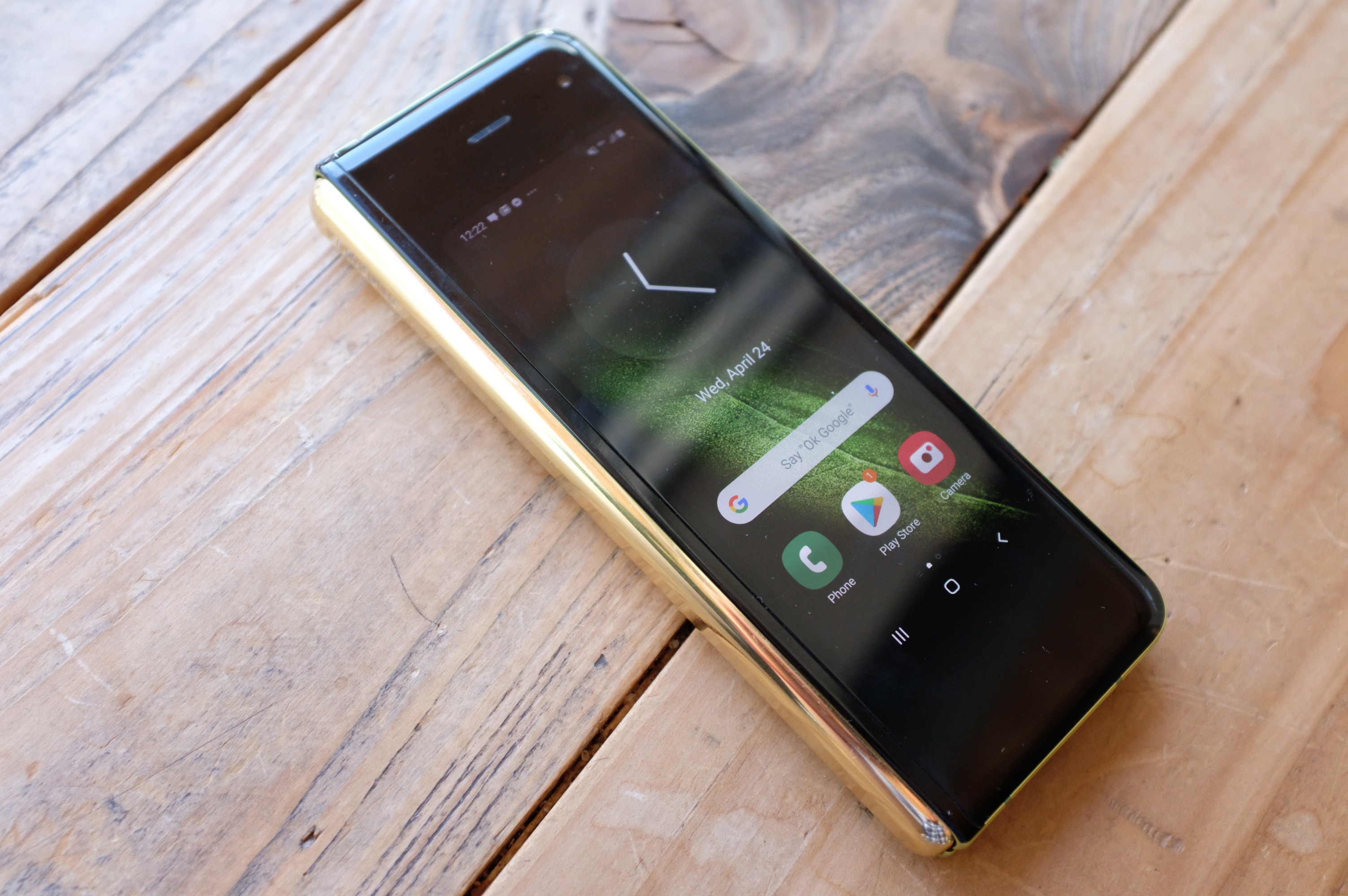

Even so, the company managed to sell its orders in advance, although it did not say how big that initial execution was. We’re also not sure how many users have canceled in the wake of last week’s events. Certainly, no one would blame them for doing so at this time.
But while the apocalyptic shit posters between us will declare the folding’s death before it was actually born, what does not kill Samsung has only strengthened it. And this misfire could, ultimately, do that for both the company and the category, courtesy of its informal beta testing.
Rewind just a week ago (seriously, it’s only been that long), when we finally got the Galaxy Fold. I was impressed. And I certainly was not alone. It is true that there is a bit of brightness the first time you see a device that seems to have been teased forever. The fact that it exists feels like a kind of victory in itself. But The Fold does an admirable job of uniting Samsung’s hardware experience with a new form factor. And what is more important, it is real and works as advertised, well, mainly, at least.
The truth is that, for the most part, I have enjoyed my time with the Galaxy Fold. And, in fact, it has been fun to do it almost daily. There are some things why the form factor is ideal, like looking at Google Maps or propping it up to watch YouTube videos on the gym’s elliptical machine. There are others when the voluminous form factor left me wanting to go back to my old smartphone, but it is to be expected that these compensations will occur.
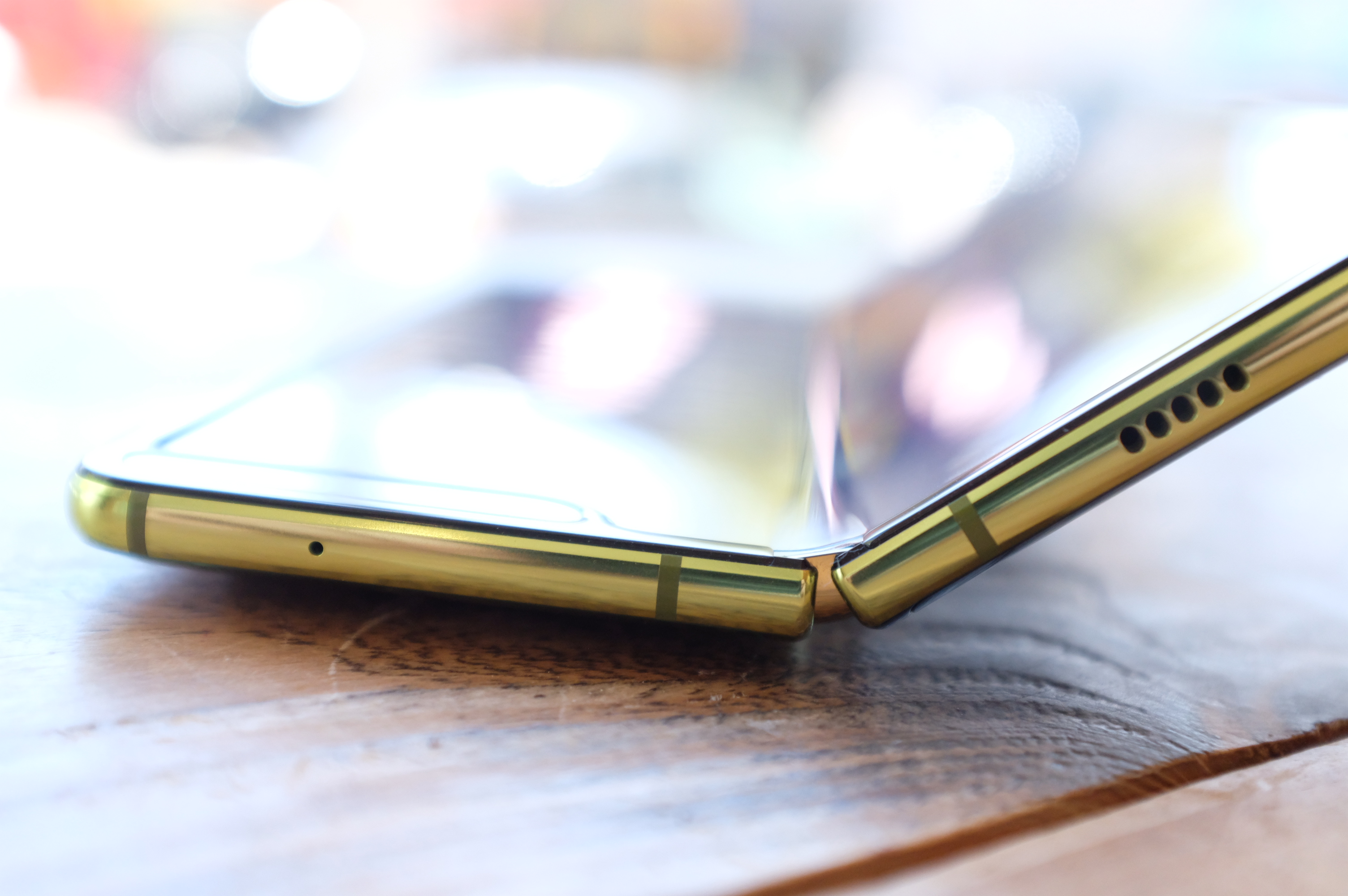

I both like the design of the Fold and I understand the criticism. Samsung has done a good job maintaining the iconic design language of the Galaxy line. The folding looks like at home next to the S and the Note. That said, the rounded back adds some volume to the product. And while it’s open, the device is thinner than an iPhone; when folded, it is more than twice the thickness, due to a space between the screens. However, it is quite thin in this mode, so it should slip very well in all but the tightest pockets of the pants.
In practice, the folding mechanism could be the most impressive part of the product. The interior features several interlocking gears that allow the product to open and close easily and allow users to interact with the device in various stages of development. I found myself using the device with it open at a pretty 90 degree angle, resting on my hand like an open book. The lid has a pair of magnets on its edges, which allow you to close it with a satisfactory click. It is strangely therapeutic.
Actually, the biggest blow against the device from a purely aesthetic point of view is that it is not the Mate X. Announced by Huawei a few days after the great discovery of the Fold, the device adopts a decidedly more minimalist approach to the category. It’s an elegant design that presents fewer devices and more screens and, honestly, the kind of things that I think most of us did not expect until at least the second generation product.
The gap between the two devices is especially evident when it comes to the front screen. The front of the screen has a bezel of around two fifths, which leaves room for a 4.6-inch screen with an uncomfortable aspect ratio. The Mate X, meanwhile, has a 6.6-inch front screen and a 6.4-inch rear screen (not to mention the larger eight-inch internal screen than the Fold 7.3).
There are reasons to recommend the fold over Mate X, too. I can not talk about the difference in the user experience, since I have only briefly interacted with the Huawei, but the price is very important. The Mate X starts with $ 2,600 even more absurd, thanks in part to the fact that it will only be available in a 5G version, adding another niche layer.
That price, I think, becomes euros, because 1) The product was announced at the MWC in Barcelona and 2) the availability of the EE. UU It probably will not start again, as the company continues to have problems with US regulators. UU
Of course, the US availability of the Fold is also in limbo at this time, although for very different reasons.
Ultimately, I spent little time interacting with the front screen. It is good to verify notifications and the like, but trying to write on that thin screen is almost impossible, with shadows of the new Palm device, which implements its own shortcuts to solve those defects. Meanwhile, the interior adopts a butterfly keyboard approach, so you can write with both thumbs while holding it open like a book.
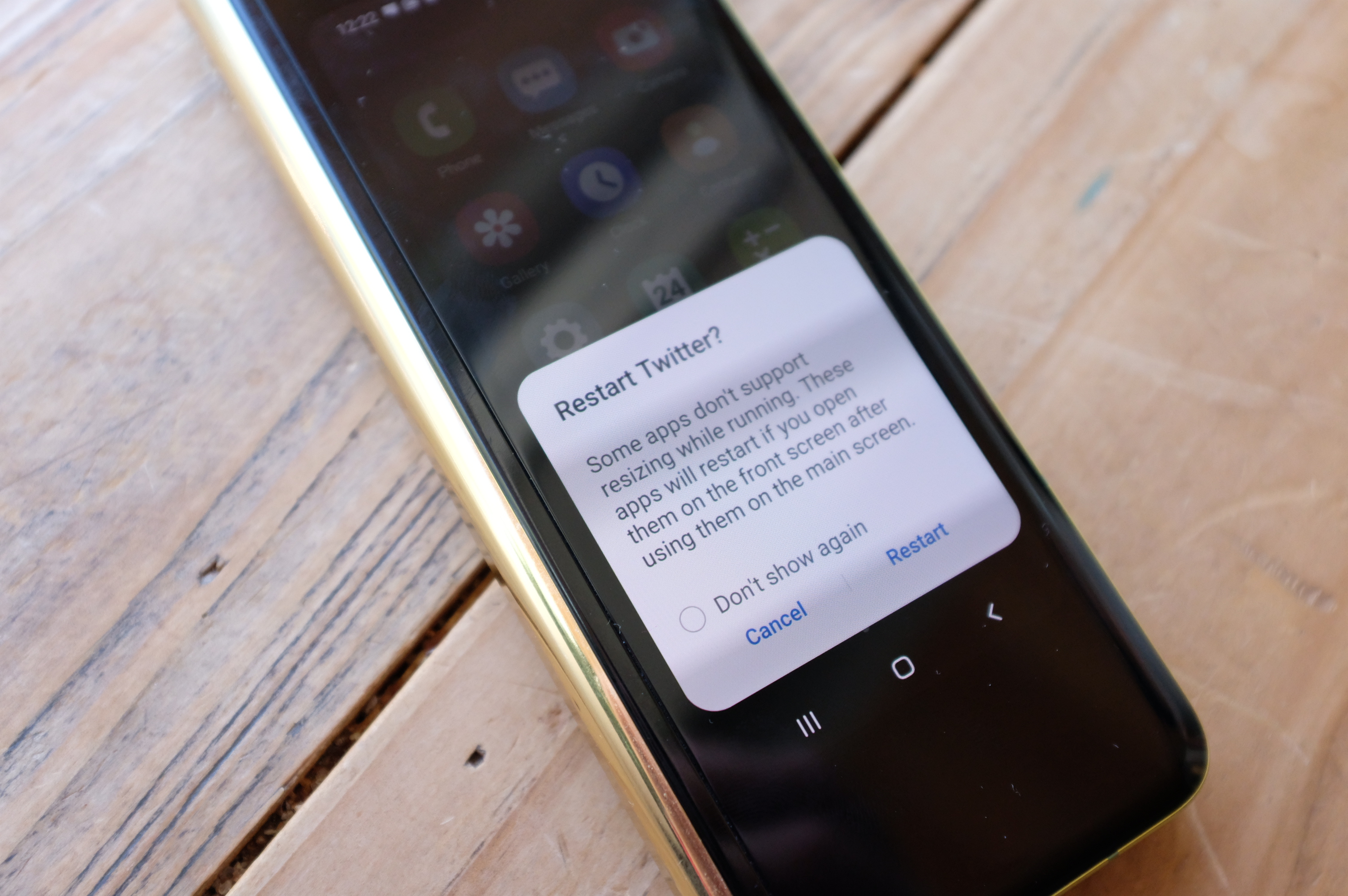

There is also the issue of application optimization. Much of this can be attributed to an earlier version of a first generation device. But as with every new device, the equation of how much time the developer must spend depends largely on the adoption of the product. If the Fold and the future Fold are not successful, the developers will be much less willing to invest the hours.
This is most obvious when it comes to application continuity, one of the main selling points of the device from the software perspective. When you work as advertised, it makes a compelling case for dual screens. Open something on the front and expand your canvas by displaying the device. Google is among the companies that worked directly with Samsung to optimize applications in this way, and is particularly useful with Maps. I used it a lot on my trip to Berkeley last week (shouting at the good people at Pegasus Books in Shattuck).
When an application is not optimized, Samsung forces you to restart it or, otherwise, you get an unpleasant case of letters bars that retain the aspect ratio of the front screen. Continuity is also not designed to work in reverse: it opens something on the big screen and then it’s transferred to the front. That’s a bit more complicated, since turning off the phone is designed to offer a kind of purpose to that session, such as pressing the power button to put the device in suspension.
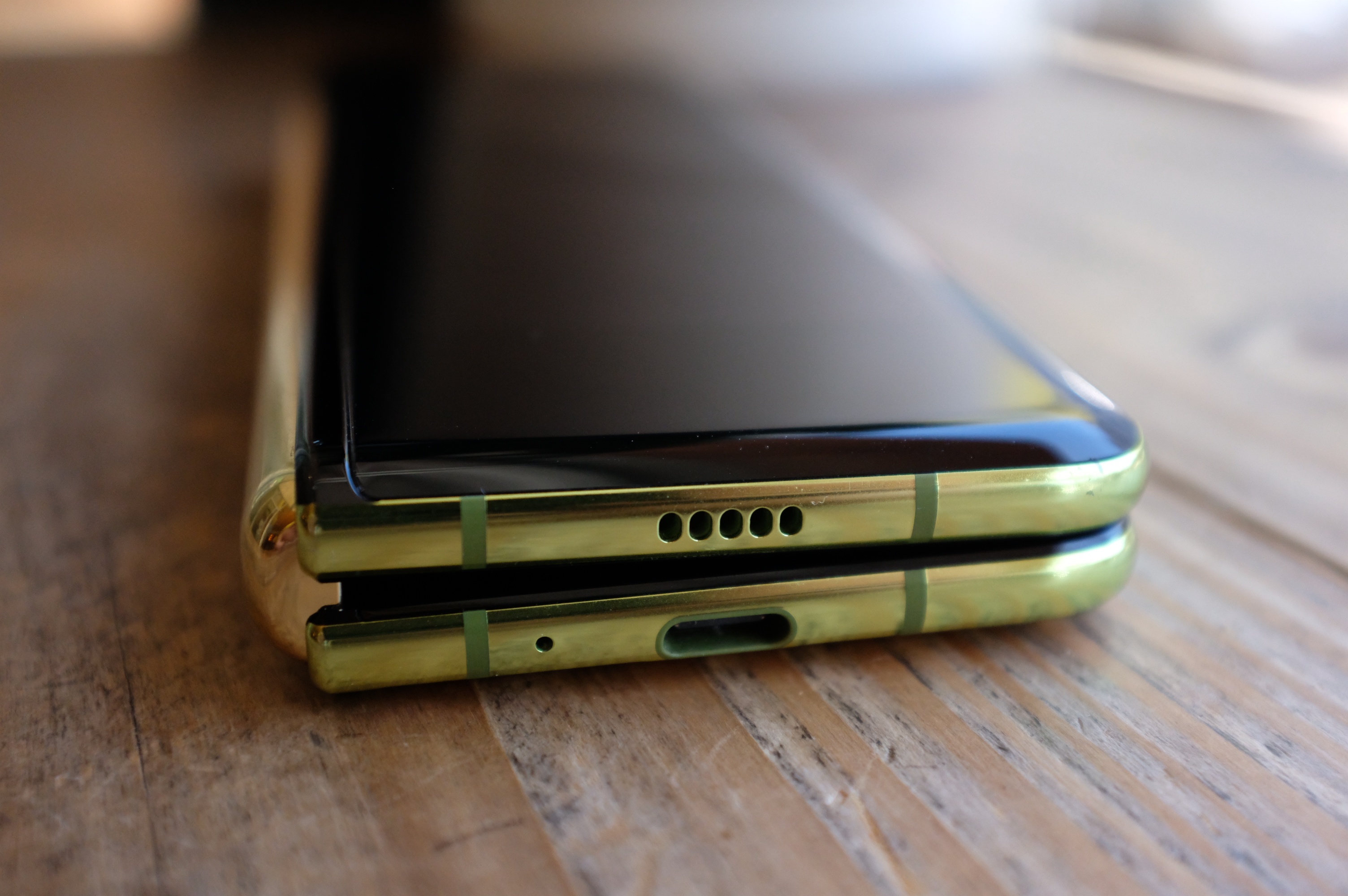

I understand, and like many other pieces here, it will be interesting to see how people use it. Apart from the obvious hardware concerns, much of the work on the second generation device will focus on the learnings of how users interact with this model. I know I was surprised when I ended up using the 7.3 inch screen to take pictures. He felt silly, like those people who carry iPads to photograph events. But ultimately, it’s a much better viewer than the miserable 4.6 inches.
That’s really just the tip of the iceberg for the interior display, of course. The size, which is somewhere between the phablet tablet and the mini, provides a large real estate space that can still be held in one hand. It is a great size for short videos. I’ve seen a lot of YouTube on this thing, although the speakers (a small series of holes in the top and bottom edges) leave a lot to be desired.
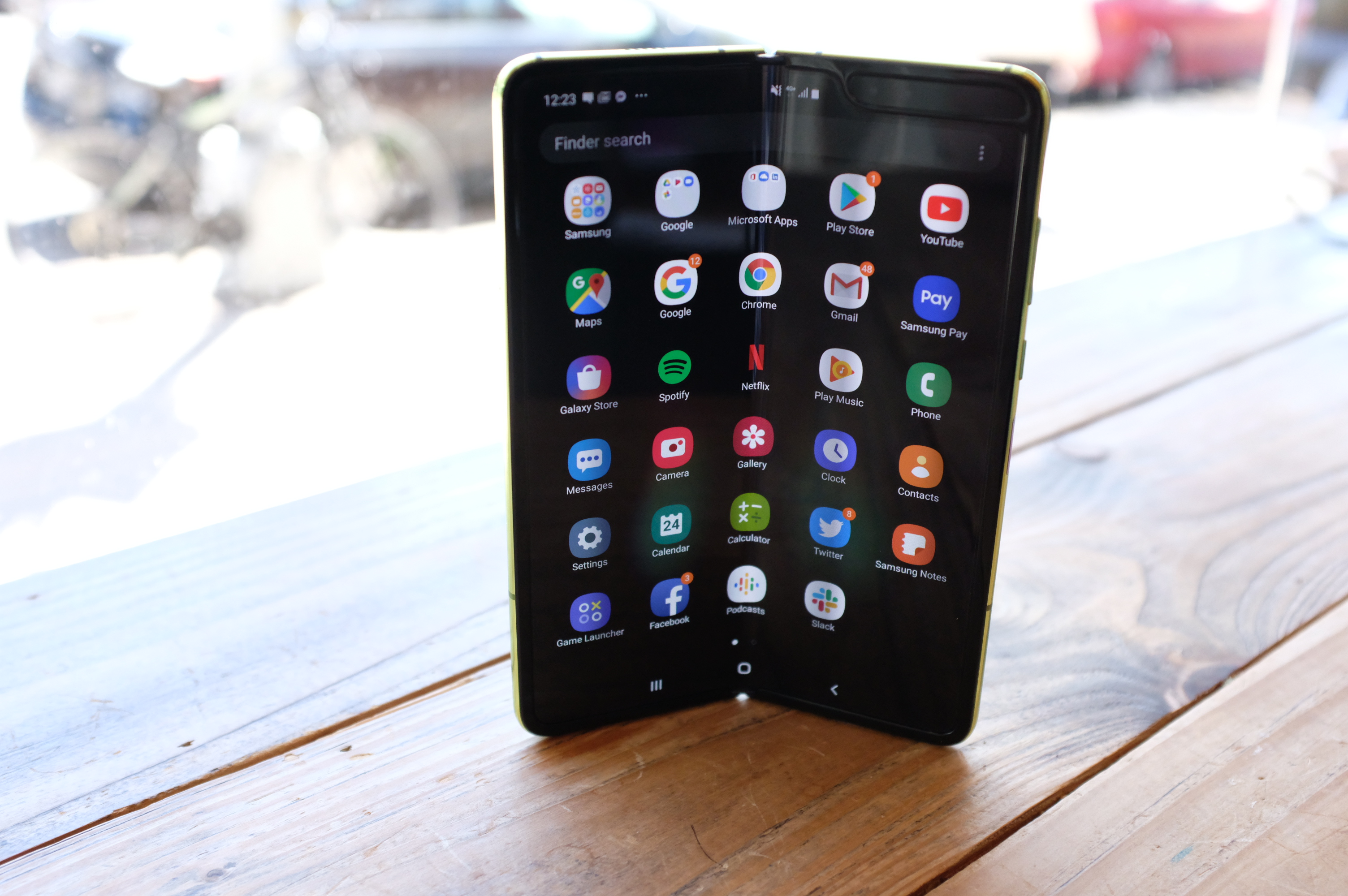

And the sewing. I found myself saying the phrase “it could be worse”. Like much of the overall aesthetics (including the strange green-gold color of my Fold’s case), it depends on the lighting. There are many times when you do not see everything, and sometimes when the glow hits you and makes it look like a line right in the center.
After taking a couple of pictures, I noticed that it is particularly evident in many shots. That probably gives a false impression of its prominence. It sucks that there is one at all, but it is not a surprise, given the nature of the design. For the most part, you do not notice it, until your finger runs through it. And even then it is subtle and not a decisive factor, unlike, say, the huge gap that made the ZTE Axon M look like two phones stuck together.
I love the ability to support the device by having it open at a 90 degree angle, so I can watch videos while I brush my teeth. But this orientation blocks the lower speakers, which makes the already doubtful sound difficult. Fortunately, your $ 1,980 will give you a pair of the excellent Galaxy Buds in the box. It’s hard to imagine that Apple includes AirPods with the next iPhone, but I think strange things have happened, right?
Multi-Active Window is the other key piece of software. It’s something that has been available on other Samsung devices and it certainly makes sense here. Open an application, slide your finger to the left from the right side of the screen and a tray will open. From there, you can open up to three applications on the screen. Once opened, the windows have a small tab on the top that allows you to reorganize them.
It’s practical I used it more during those times when I had a video on an exercise machine, so I did not have to close everything to check emails and Twitter. I am a multi-tasker gym. I’m sorry, I’m just who I am now.
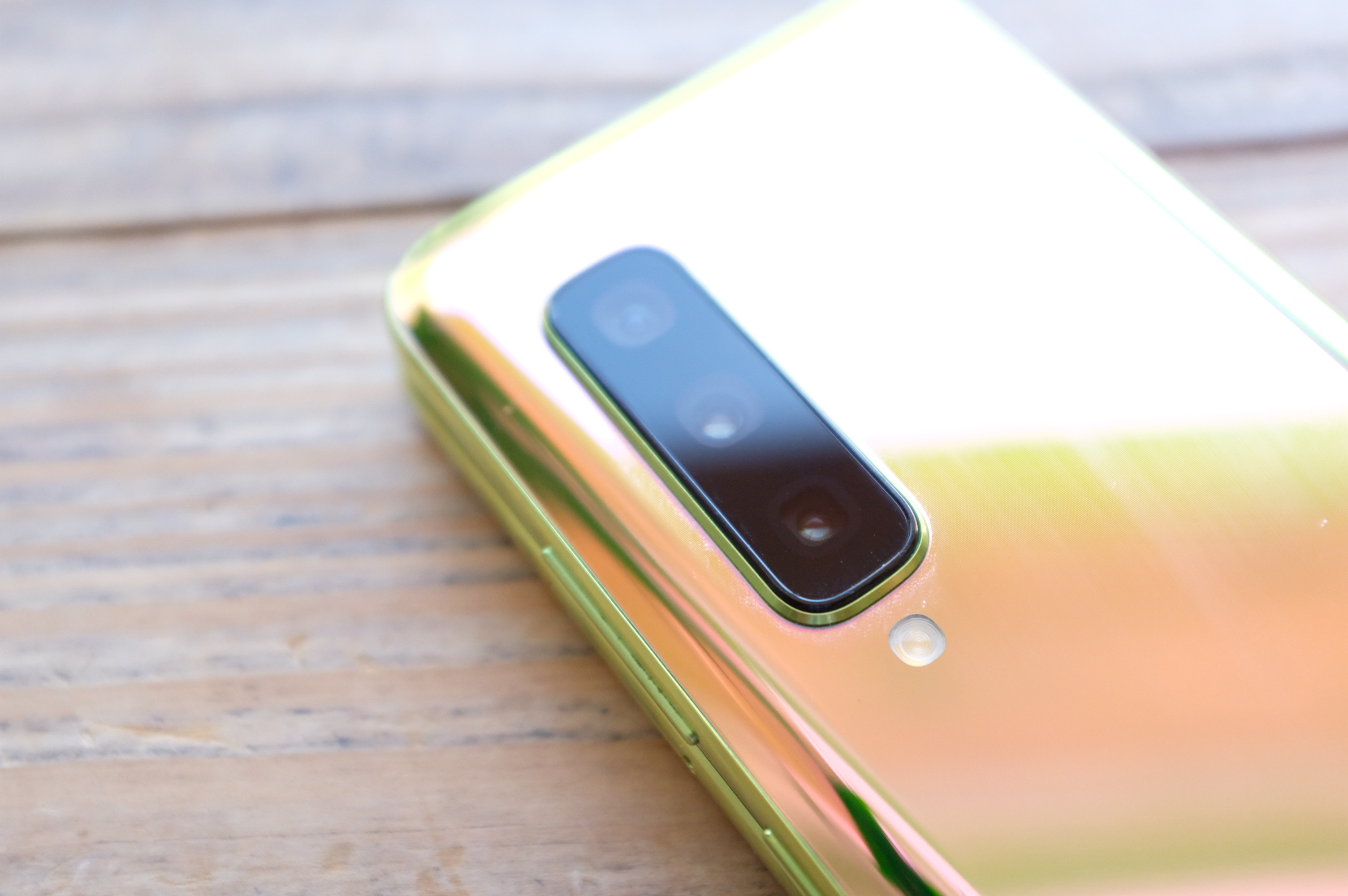

In general, it worked quite well, thanks to the solid internal features, which include 12 GB of RAM and a Snapdragon 855. The main problem I found was how some of the applications maintained that half-screen format after it closed and reopened . I’m sure some people will prefer that and, honestly, I’m not sure what the ideal solution is.
The Fold also has a robust battery on board. Like Huawei’s, it is divided into two, one on each side of the fold. They resolve to a fleshy 4,380 mAh. That’s only slightly less than Huawei’s 4,500, but again, Mate X is 5G by default, which means it will burn through the mAh at a faster rate.
Ultimately, the greatest strength of the Fold is Samsung itself. I understand why you probably did a double take after the company’s latest hardware scandal, but the fact is that the company knows how to build phones. The Fold was built largely on the basis of the successful Galaxy line, even when it presents a curious little fork in the family tree.
That means a solid and well thought-out user experience outside of everything.
(Gallery ID = “1816871,1816872,1816873,1816874,1816875,1816876”)
That list includes excellent cameras with excellent software features and smart tricks like the new Wireless PowerShare, which allows you to fold the phone and charge the Galaxy Buds or another phone while it is plugged in. For better or for worse, it also includes Bixby. Our model was a European version that did not have the full version, but I think I have made my thoughts about the intelligent assistant well known in recent years.
The dedicated Bixby button is very here. And yes, I accidentally pressed it a lot. The headphone jack, on the other hand, is notoriously absent, which is undoubtedly a great driver behind the decision to include Galaxy Buds. The fold is an anomaly in several ways, but it is hard to avoid the feeling that this could ultimately represent the beginning of the end of the port in Samsung’s premium devices.
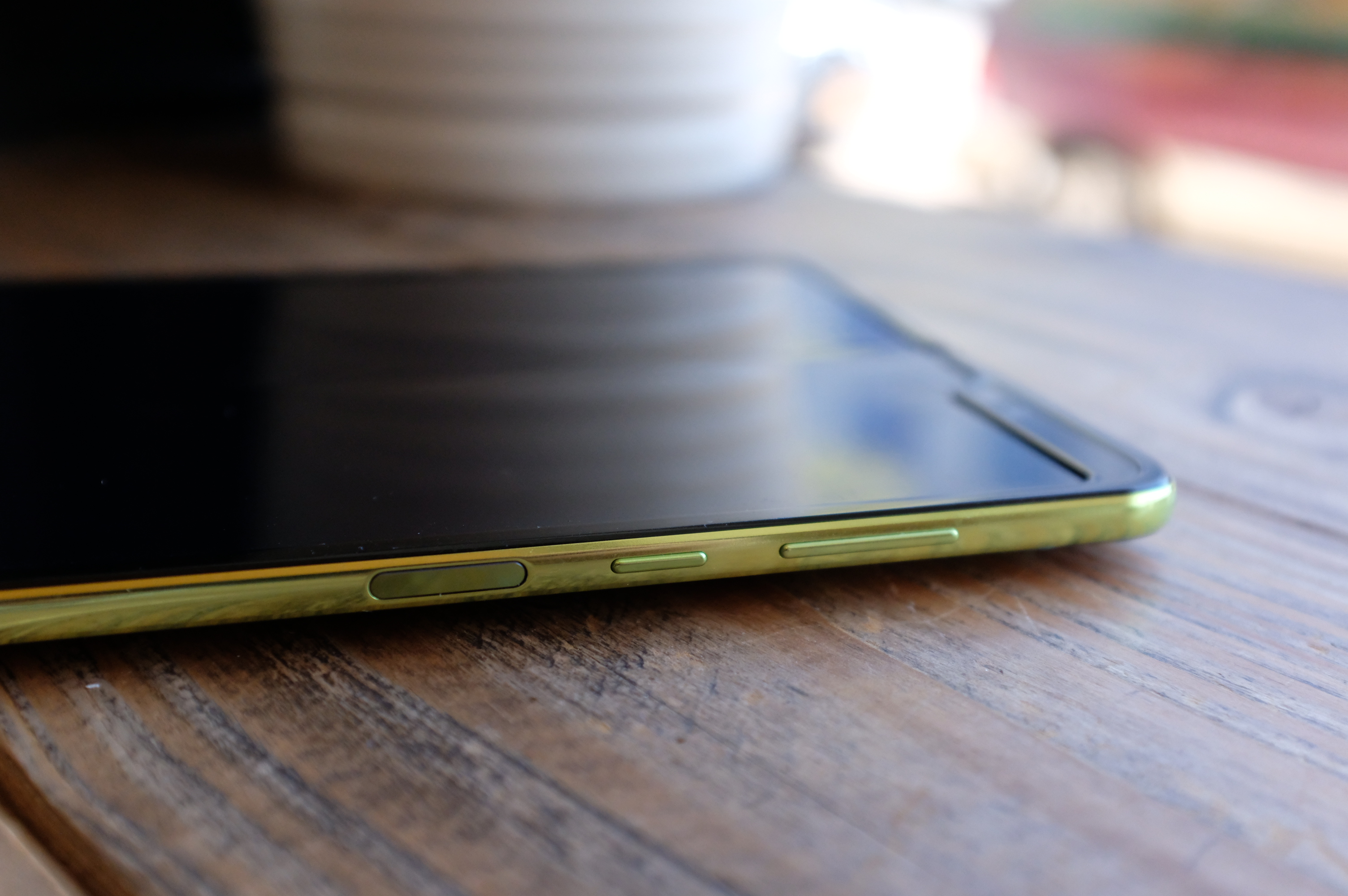

The S Pen is also absent. The pen began to operate on the Note line and has since been extended to other Samsung devices. I suspect the company would have taken a lot of space to squeeze space with dual batteries, and maybe it’s saving something for future generations, but it seems to be the ideal screen size for that accessory.
I’m separated from Fold this week, according to Samsung’s instructions. Unlike other products, giving up on it will not be so difficult. There was not a moment in the last week when the Fold did not feel like an excess. However, there were times when the screen of my iPhone XS felt quite small after changing again.
In many ways, the folding phone still feels like the future, and the Fold feels like a stop along the way. There are many first generation problems that should / should have been solved before mass producing this device. That said, there are certain aspects that can only be really solved in real-world tests. Take the fact that Samsung submitted the device to 200,000 open mechanics and closes. That’s a lot, and probably more than the life of any of these devices, but people do not open and close like a machine. And when it comes to the screen, well, a little dirt is bound to get between gears, metaphorically and literally.
When I close this Galaxy Fold for the last time, it seems safe to say that the device represents a potentially exciting future for a stagnant space for smartphones. But that’s what happens with the future, it just is not here yet.
[ad_2]

